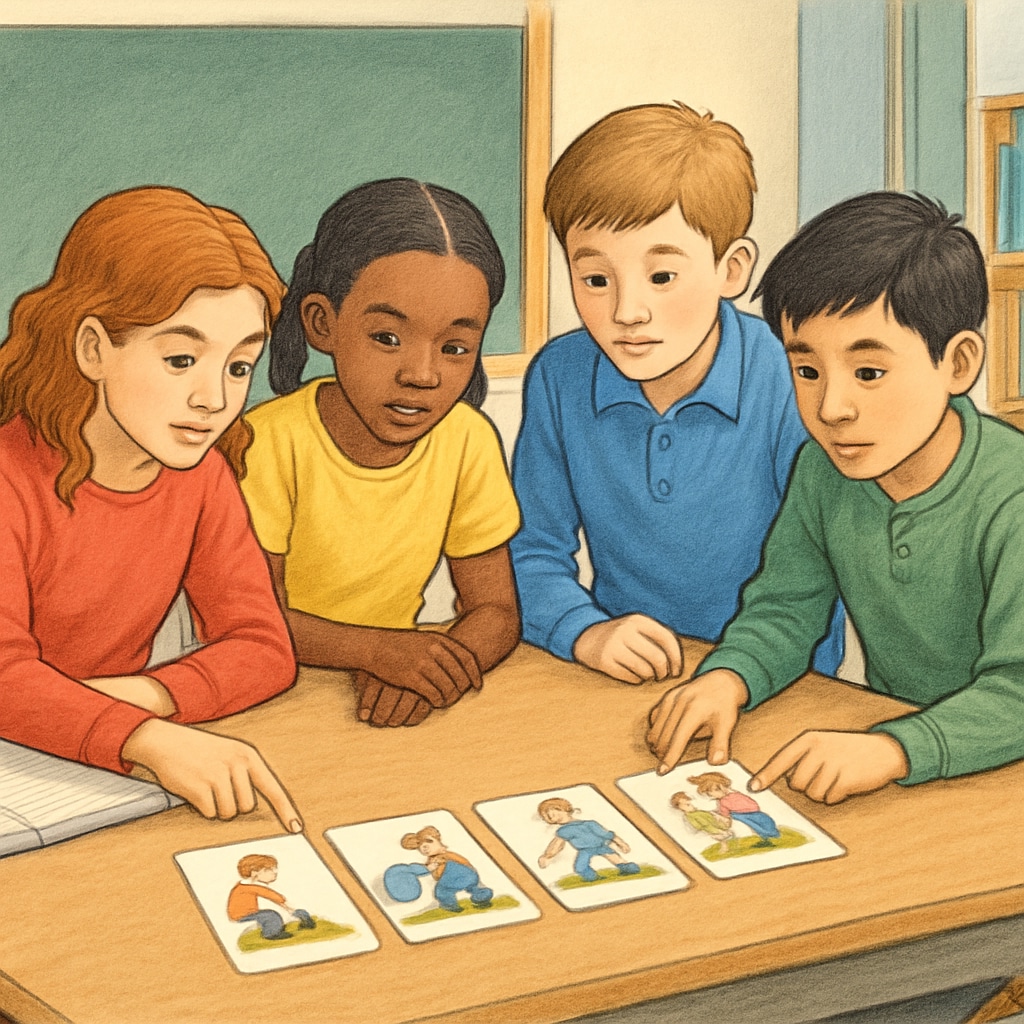Zoom and ReZoom activity books are remarkable tools for engaging K-12 students in visual storytelling, critical thinking, and collaboration. However, teachers often face the challenge of restoring the correct sequence of these interactive materials. To help educators maximize the potential of these resources, this guide provides a clear system for identifying visual clues, understanding educational logic, and seeking support from professional communities. By using these strategies, you can ensure your Zoom/ReZoom activities are implemented effectively.
Understanding the Unique Design of Zoom and ReZoom
Zoom and ReZoom, created by Istvan Banyai, are wordless picture books that challenge students to reorder images based on visual clues. Each image in the sequence either zooms in or out, creating a compelling narrative when arranged correctly. These activities promote collaboration, critical thinking, and communication in the classroom. However, the lack of written instructions can make it difficult to restore the correct order if the pages are shuffled.
Teachers must first understand the design principles of these books. The key lies in the “zoom effect”—each page either magnifies a detail from the previous image or zooms out to reveal a larger context. Recognizing these transitions is crucial for reconstructing the sequence.

Strategies for Rebuilding the Sequence
Reordering Zoom/ReZoom pages may seem daunting, but with a systematic approach, it becomes manageable. Here are some effective strategies:
- Identify Visual Clues: Look for overlapping elements between consecutive images. For example, a detail in one image often becomes a central focus in the next.
- Follow Logical Progressions: Pay attention to the narrative flow. Zoom starts with a close-up and gradually zooms out, while ReZoom reverses this process.
- Collaborate with Students: Involve your students in the reordering process. This not only engages them but also helps develop their observation and reasoning skills.
- Compare with Reference Materials: If available, consult teacher guides or online resources for the correct sequence.
Leveraging Community and Online Resources
In addition to your own observations, professional communities and online platforms can be invaluable. Many educators have shared their experiences and solutions for using Zoom/ReZoom in the classroom. Here’s how to make the most of these resources:
- Join Teaching Forums: Platforms like Reddit’s Teaching Community or other educator forums often have discussions about Zoom/ReZoom activities.
- Watch Tutorials: Video tutorials on platforms like YouTube can provide visual demonstrations of the correct order.
- Access Printable Guides: Some websites offer downloadable sequencing guides for these books.
These resources not only help with sequencing but also provide ideas for enhancing the activity. For example, some teachers use Zoom/ReZoom as a springboard for creative writing or art projects.

Maximize the Educational Impact of Zoom/ReZoom
To make the most of Zoom and ReZoom in your teaching, consider these additional tips:
- Set Clear Objectives: Define what you want your students to learn—whether it’s teamwork, observation skills, or storytelling.
- Encourage Reflection: After completing the activity, ask students to discuss their thought processes and what they learned.
- Adapt to Student Levels: For younger students, provide hints or partially ordered sequences. For older students, increase the challenge by mixing multiple sets.
By integrating these strategies, you can transform Zoom/ReZoom activities into more than just sequencing exercises—they become dynamic learning experiences that foster critical skills.
In conclusion, mastering the sequencing of Zoom/ReZoom materials can significantly enhance their educational value. By paying attention to visual details, understanding the logical progression, and leveraging community resources, you can unlock their full potential for your classroom. These activities are more than just fun—they are tools for growth, creativity, and collaboration.


